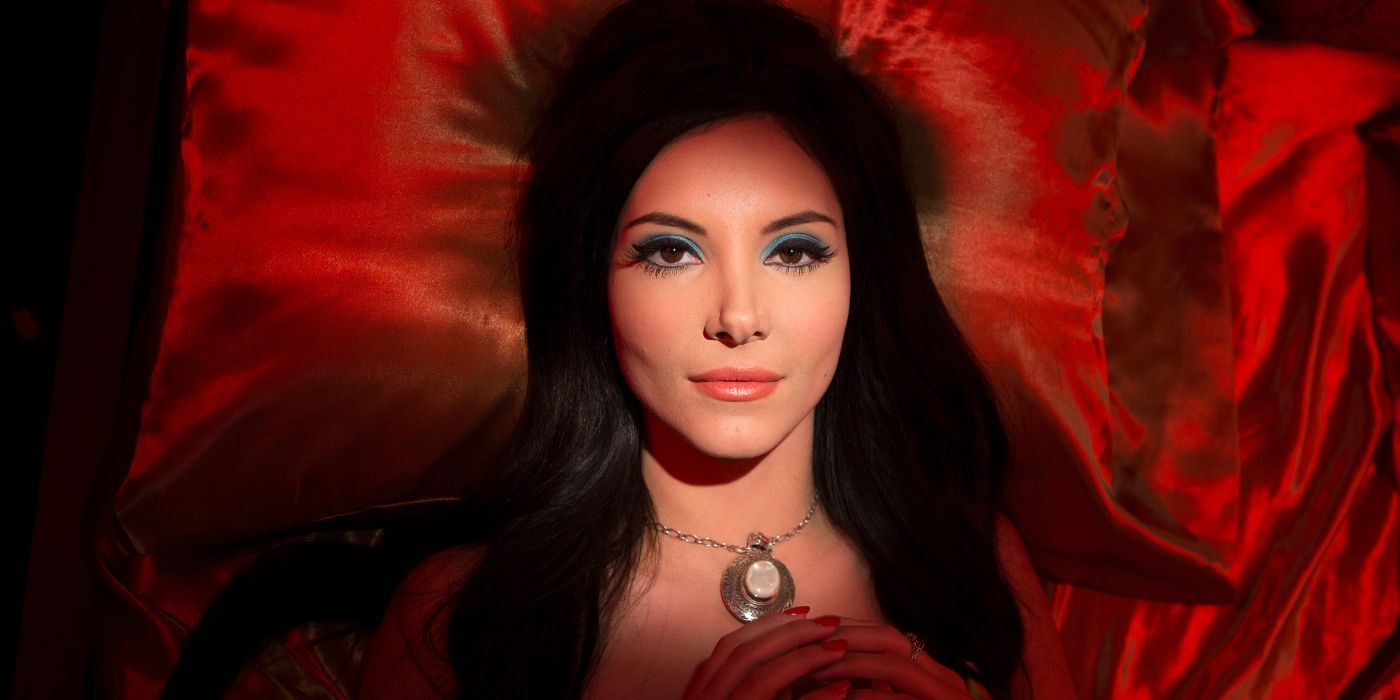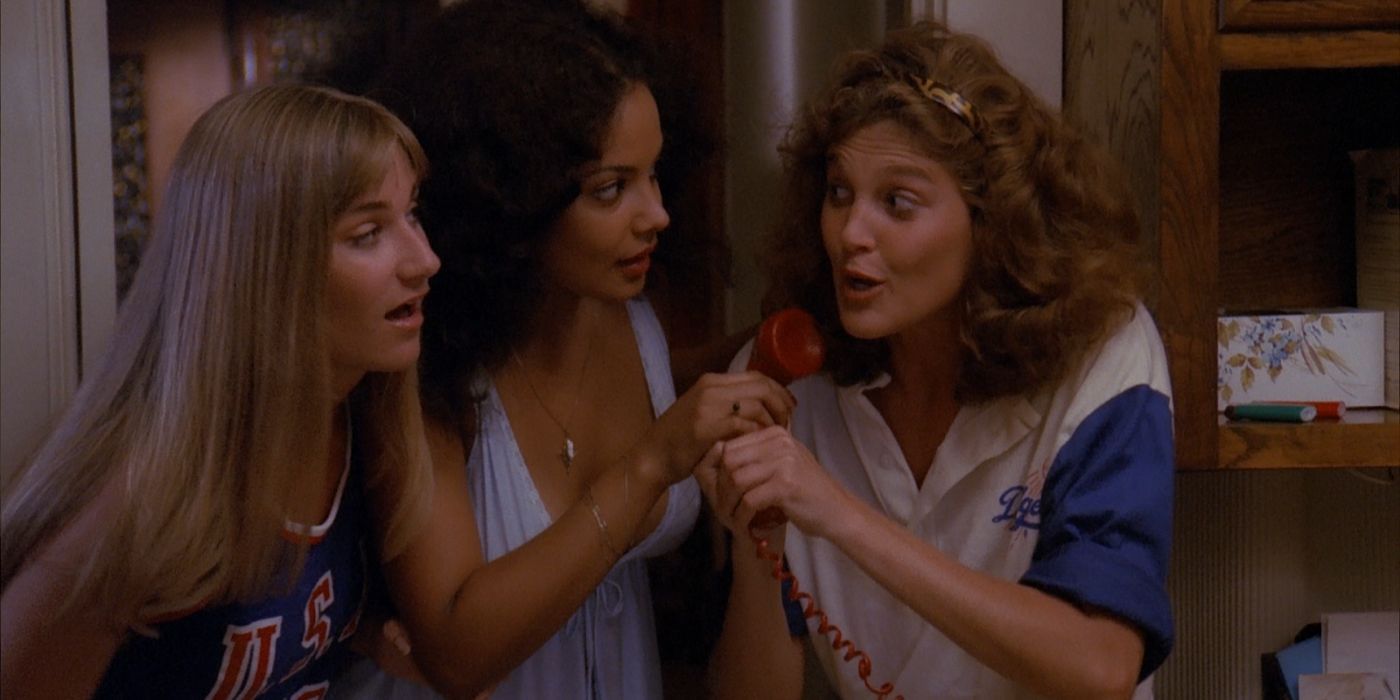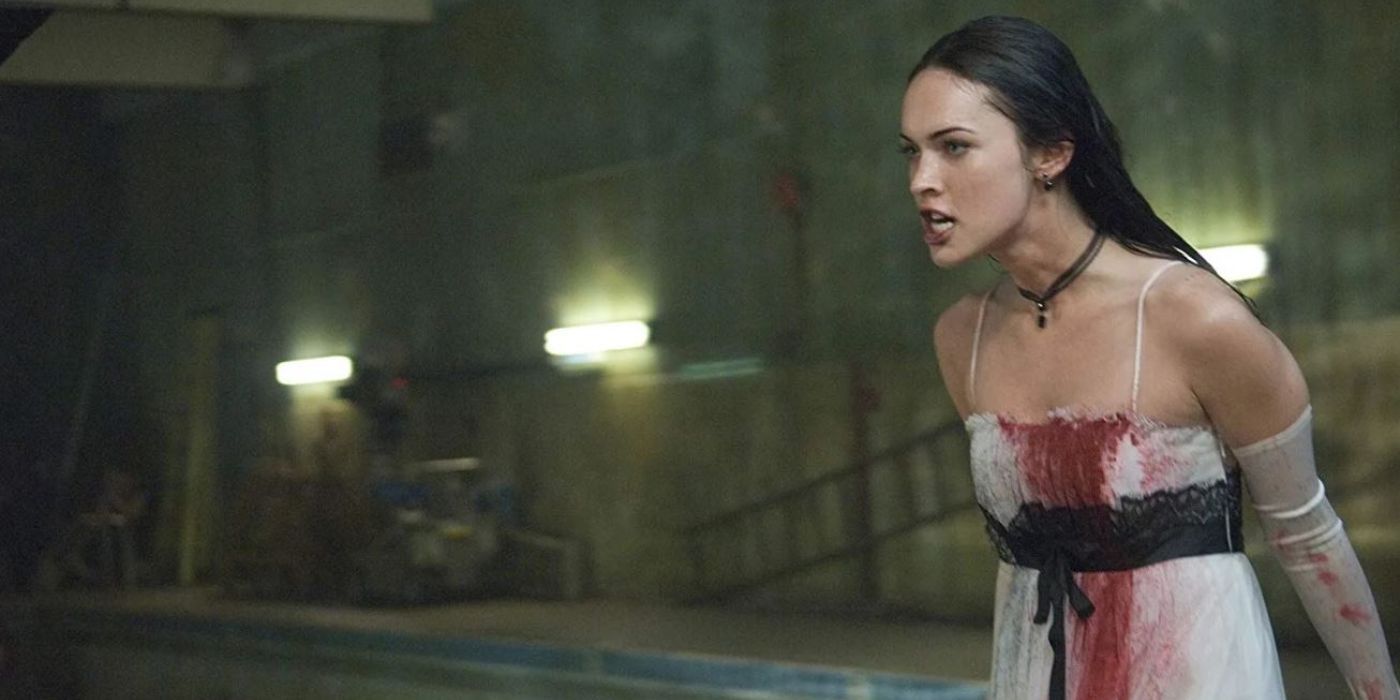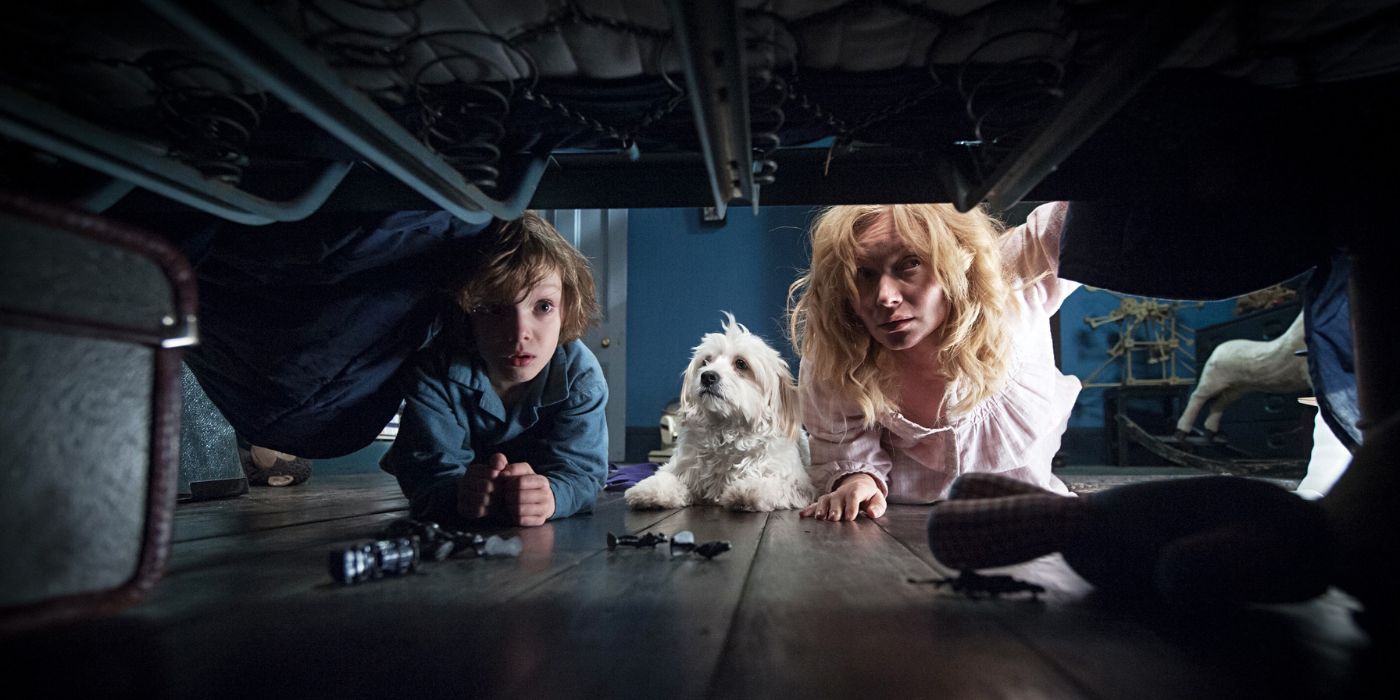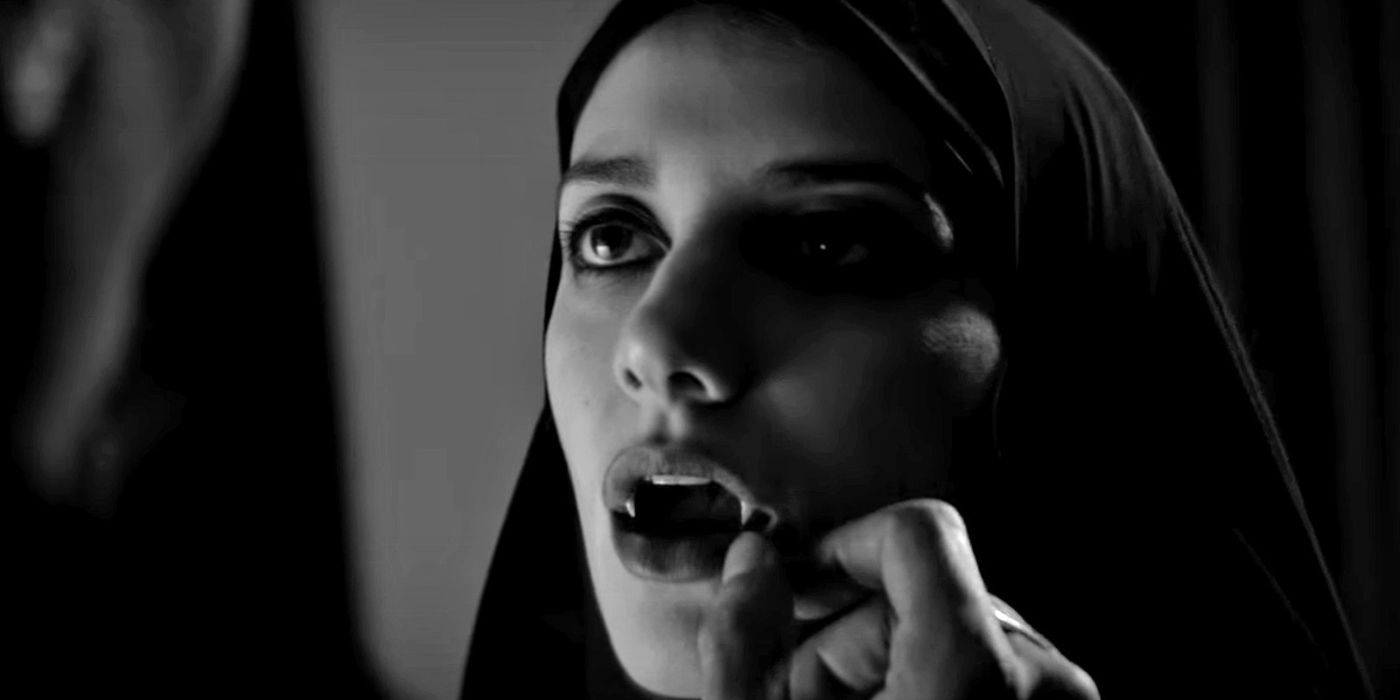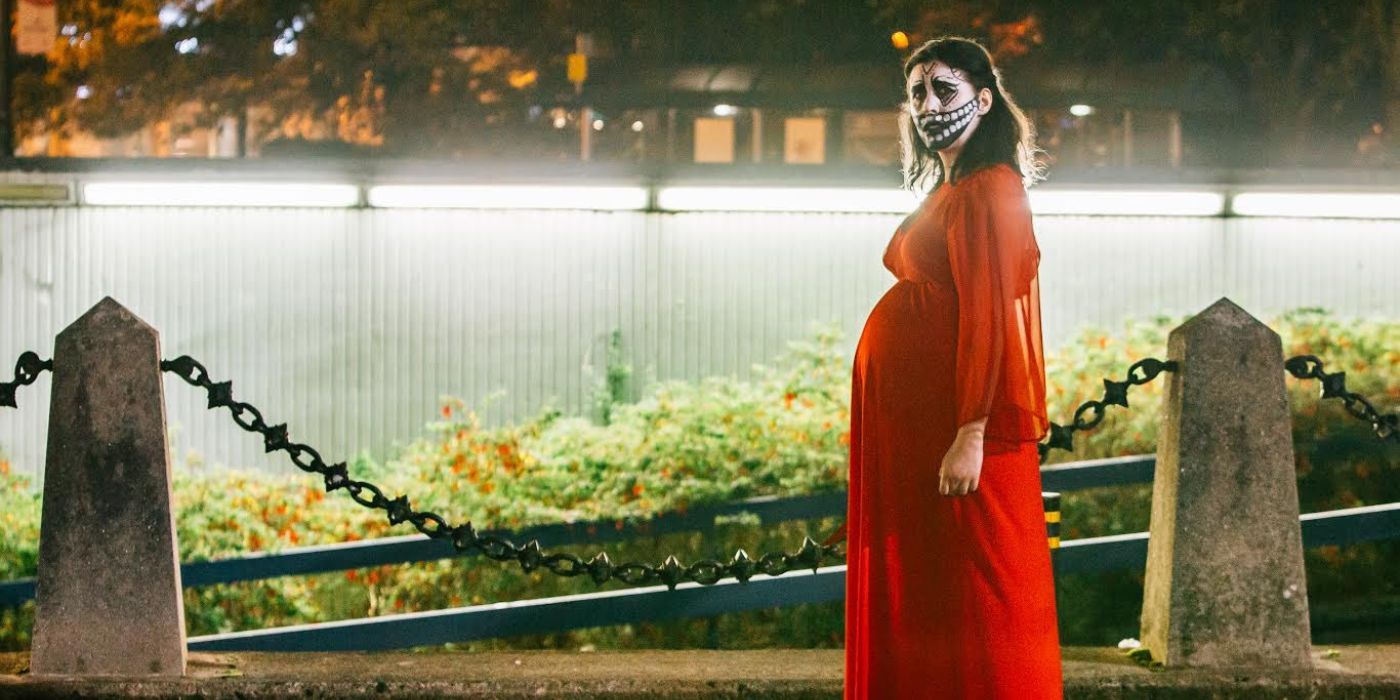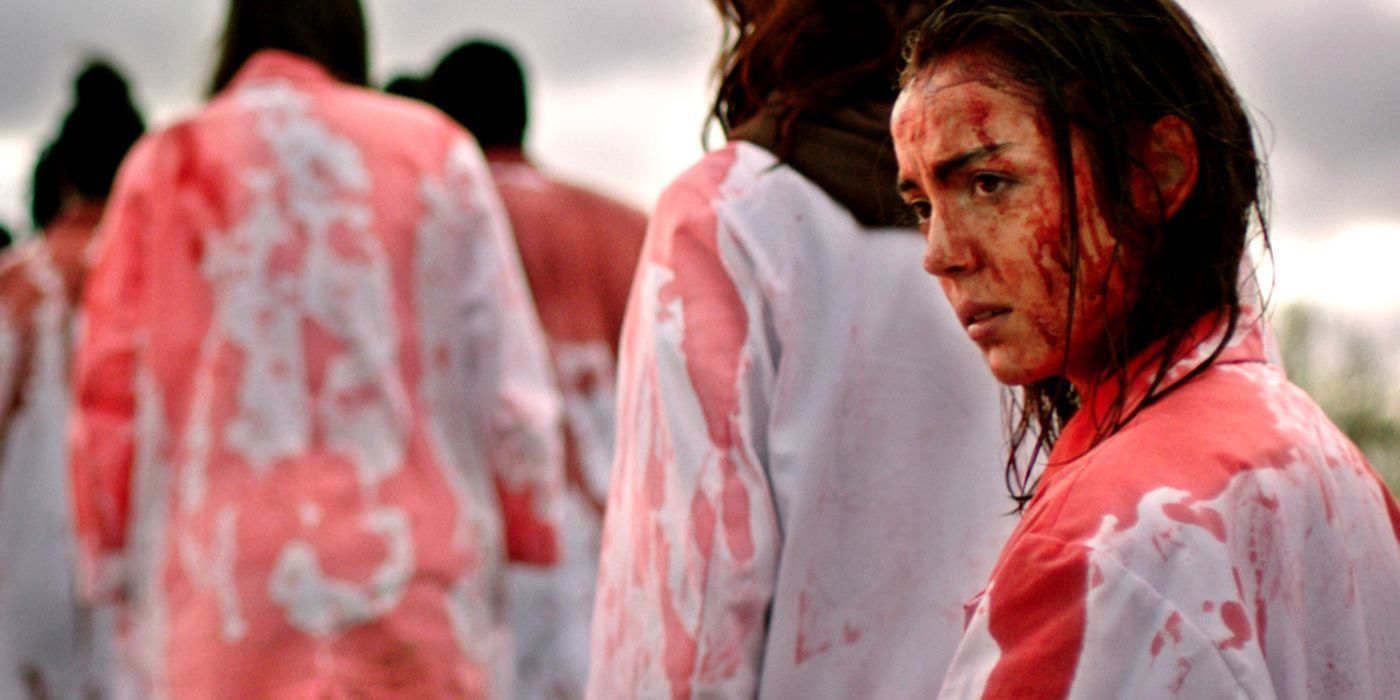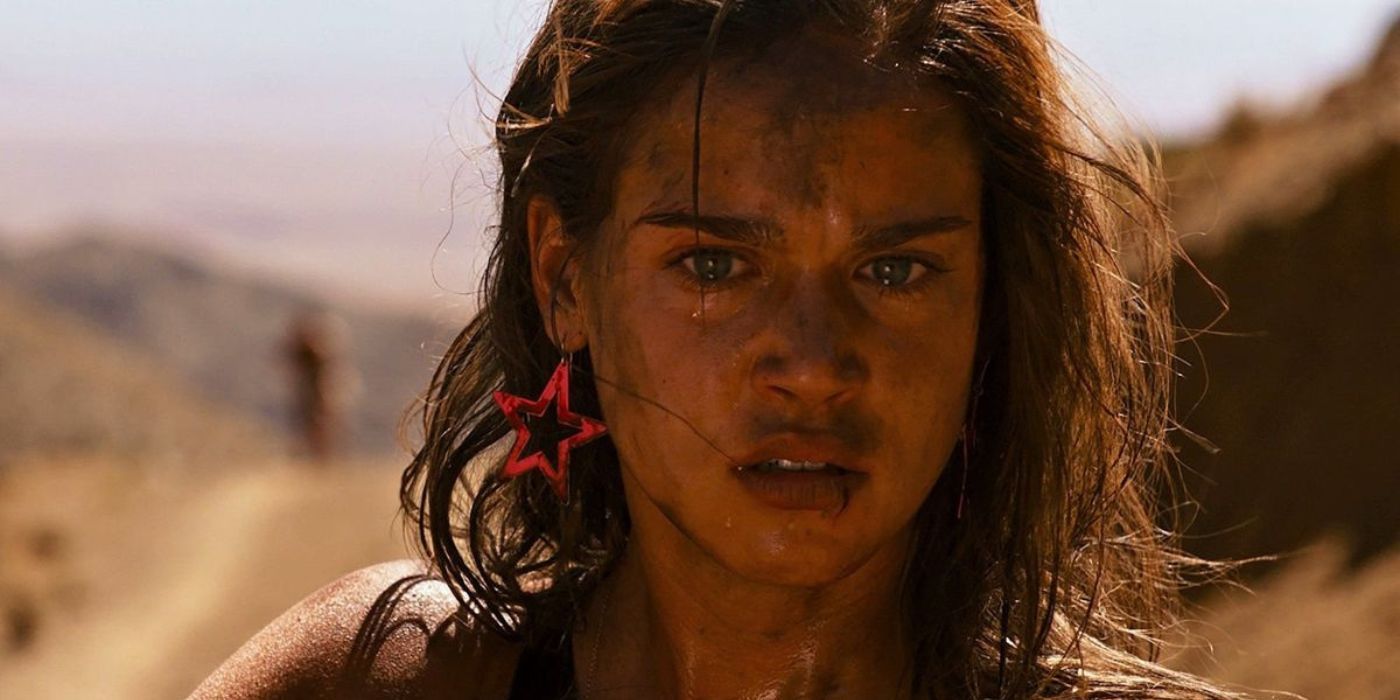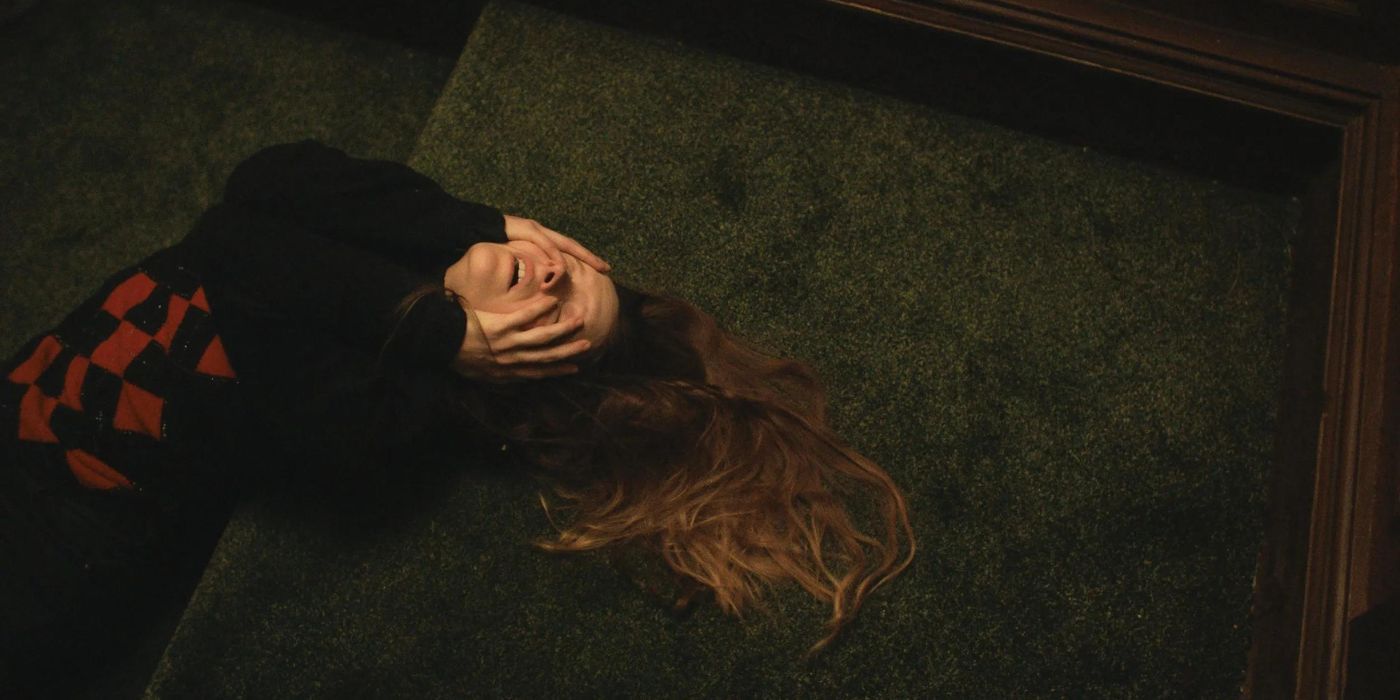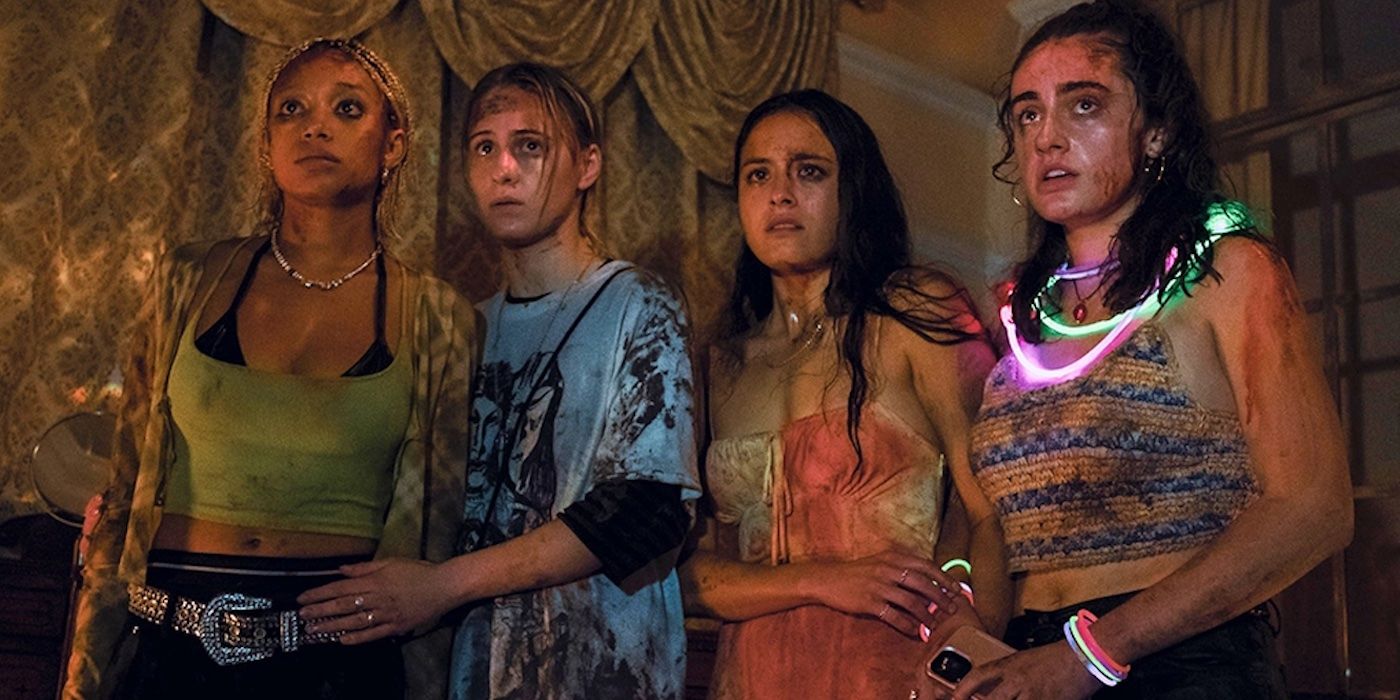Men have largely dominated the horror movie genre. Just under 20 horror movies have won an Oscar in the Academy Award’s 94-year history, and not a single one was directed by a woman. However, it might surprise you that women have been directing horror movies since the early days of cinema. Examples include Faust et Méphistophélès in 1903 by Alice Guy-Blaché and Suspense in 1913 by Lois Weber. Many female horror filmmakers have been forgotten, but not anymore.
In the past few decades, we have seen an increase in female-directed horror films. A 2016 article in Rolling Stone hailed “the rise of the modern female horror filmmaker,” charting a course from The Babadook to Raw. In the six years since that article, more female filmmakers have helped elevate the genre. Horror is no longer a man’s world.
‘The Slumber Party Massacre’ (1982)
When a high school senior (Michele Michaels) is left home alone by her parents, she decides to do what any teenage girl would do and throw a slumber party. The evening turns bloody when an escaped mass murderer with a penchant for power tools (Michael Villella) shows up to the party uninvited.
Directed by Amy Holden Jones and written by Rita Mae Brown, The Slumber Party Massacre is the first in a trilogy, with the second film directed by Deborah Brock and the third film directed by Sally Mattison. The Slumber Party Massacre trilogy (1982-1990) was the first horror film series in history whose films were exclusively written and directed by women.
‘Jennifer’s Body’ (2009)
There is nothing scarier than a teenage girl, especially a demonically possessed high school cheerleader (Megan Fox) who feeds on her male classmates’ flesh to fulfill her cannibalistic cravings.
Directed by Karyn Kusama and written by Diablo Cody, Jennifer’s Body was a box office bomb back in 2009. According to Cody, the movie was marketed “all wrong.” Instead of highlighting the film’s focus on female friendship, the studio targeted straight teenage boys. Producers took advantage of Fox’s bisexuality and heavily marketed the kiss between Fox and Amanda Seyfried to attract male viewers. However, Jennifer’s Body has since been appreciated as a feminist, queer, cult film in the aftermath of the MeToo movement.
‘The Babadook’ (2014)
Amelia (Essie Davis) is a widowed single mother struggling to raise her six-year-old son Samuel (Noah Wiseman). When they read a strange pop-up storybook about Mister Babadook, Samuel becomes convinced that the monster is real. Soon, their house becomes haunted by a mysterious presence, and the boundary between fiction and reality becomes blurred.
Directed by Jennifer Kent, The Babadook opened to positive reviews. In 2014, Rotten Tomatoes ranked it as the best-reviewed horror film of the year and the third best-reviewed film overall. Not only is The Babadook genuinely terrifying, but it is also deeply moving since grief is the real monster of the movie.
‘A Girl Walks Home Alone at Night’ (2014)
In a desolate and death-ridden Iranian ghost town called Bad City, a lonesome skateboarding vampire stalks the locals. A Girl Walks Home Alone at Night imagines a twisted and feminist fairy-tale in which Little Red Riding Hood and the Big Bad Wolf are two sides of the same coin.
Directed by Ana Lily Amirpour, A Girl Walks Home Alone at Night is a hybrid of genres, mixing a spaghetti Western with a vampire film. Shot entirely in black-and-white, with minimal dialogue, the film pays homage to the 1922 German Expressionist film Nosferatu. Amirpour also drew inspiration from graphic novels, with the fictional location being a reference to Sin City.
‘Prevenge’ (2016)
Directed by, written by, and starring Alice Lowe, Prevenge is a black comedy-slasher with a maternal twist. Ruth (Alice Lowe) is seven months pregnant when guided by her unborn baby; she embarks on a homicidal rampage as revenge for the death of her husband.
Lowe was pregnant while filming, and before the movie was released, she gave birth to a baby girl, who was able to play Ruth’s child in the film. Lowe wanted to discuss “how existential it is that another human being comes out of a hole in you. Men have always made sci-fi about that idea, but why shouldn’t women, in a different way?”
‘Raw’ (2016)
When Justine (Garance Marillier), a sixteen-year-old veterinary student and vegetarian, tastes meat for the first time during a time-honored hazing ritual, she develops an all-consuming craving for human flesh.
Directed by Julia Ducournau, Raw was criticized for its graphic body horror since two people reportedly fainted at the Toronto International Film Festival. Ducournau has expressed frustration at the sensationalist coverage, claiming she didn’t want to shock anyone. In Raw, cannibalism is only a concept used to explore the horror nd humanity of adolescence. In an interview with Vulture, Ducournau responds to claims that her filmmaking is provocative, arguing, “Honestly, I think if I were a man, nobody would say that.”
‘The Love Witch’ (2016)
Elaine (Samantha Robinson), a beautiful young witch, is desperate for love. In her gothic Victorian home, she seduces men with spells and potions. However, when her magic gets out of hand, she ends up with a string of victims. When she finally meets her Prince Charming, Elaine’s desire to be loved drives her to the brink of insanity.
Directed by Anna Biller, The Love Witch playfully pays homage to 1960's camp horror movies and the beauty of Technicolor while also interrogating modern-day gender roles. The femme fatale archetype is often explored from the male perspective as an embodiment of misogynistic fears about women. As a feminist filmmaker, Biller tackles the theme of female fantasy through an alternative lens.
‘Revenge’ (2017)
When Jen (Matilda Lutz) is left for dead in the middle of a desert after being assaulted by three men on a hunting trip, she recovers and seeks vengeance on her attackers. The hunters soon become the hunted as Jen plots her bloody revenge. The brutal final scene earns Jen a place in “Final Girl” history.
Directed by Coralie Fargeat, Revenge pays homage to classic rape-revenge movies such as I Spit On Your Grace and Ms. 45, both directed by men, but adds a distinctly modern and feminist spin.
‘Saint Maud’ (2019)
When a devoutly religious hospice nurse named Maud (Morfydd Clark) meets the terminally-ill former dancer under her care (Jennifer Ehle), she becomes obsessed with saving her soul by any means necessary.
A24 is known for their critically acclaimed and artistically inclined horror movies such as Midsommar and The Witch. Often pushing the boundaries of the genre, horror films with the A24 stamp of approval tend to explore complex themes such as trauma, grief, and religion. Directed by Rose Glass, Saint Maud is one of the company's most impressive movies in the past few years.
‘Bodies Bodies Bodies’ (2022)
When a group of spoiled and self-absorbed twenty-somethings plan a hurricane party at a remote family mansion, it’s all fun and games until one of the guests turns up dead. When fake friends turn on one another, the party descends into literal backstabbing and betrayal.
Another A24 darling, Bodies Bodies Bodies is a recent release directed by Halina Reijn in her English-language debut. Although the characters are insufferable, the star-studded cast (made up of Amandla Stenberg, Rachel Sennott, and Pete Davidson, to name a few) give outstanding performances. Bodies Bodies Bodies has earned its place alongside horror-comedy classics such as Scream, The Cabin in the Woods, and Jennifer’s Body.

